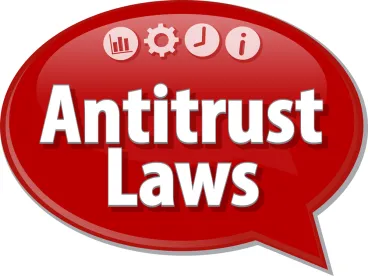On October 31, 2022, the US Department of Justice’s (DOJ) Antitrust Division (Division) made good on its intention earlier this year to revitalize efforts surrounding criminal enforcement of Section 2 of the Sherman Act when the president of a paving and asphalt contractor in Montana pleaded guilty to one count of attempting to monopolize the market for certain construction services in Montana and Wyoming. This is the Division’s first criminal prosecution of a Section 2 case in approximately 50 years. While criminal enforcement of antitrust laws has traditionally focused on per se anticompetitive agreements between two or more horizontal competitors, Section 2 primarily focuses on conduct by one firm or company with significant market power. This announcement—and subsequent criminal resolution—marks a significant departure from long-standing DOJ antitrust enforcement of monopolization claims and is a landmark result for the Division’s continued expansion of its criminal enforcement efforts.
Most notably, seemingly unilateral conduct that “attempts” to collude is now subject to criminal prosecution under Section 2, even if such an attempt did not result in any agreement. In contrast, there is no “attempt” component of a Sherman Act Section 1 charge, where the Division has traditionally investigated and prosecuted per se criminal price fixing, bid rigging and market allocation conduct requiring an agreement or “meeting of the minds” between horizontal competitors.
According to court documents, the DOJ alleged that Nathan Nephi Zito attempted to monopolize the markets for highway crack sealing services administered by Montana and Wyoming by proposing that his company and its competitor allocate regional markets. Zito approached a competitor about a “strategic partnership” and proposed that his company would stop competing for projects administered by South Dakota and Nebraska and the competitor would stop competing for projects administered by Montana and Wyoming. Zito allegedly offered a $100,000 payment as additional compensation for lost business in Montana and Wyoming and proposed that they enter into a transaction to “disguise their collusion.” The competitor company then approached the government and cooperated in its investigation, including by recording phone calls with Zito.
This case, the first Section 2 criminal resolution in decades, was prosecuted in coordination with the Procurement Collusion Strike Force (PCSF), which remains a top priority for the DOJ. The PCSF has been quite active in recent months, obtaining several convictions and bringing new indictments.
Although Section 2 is regularly associated with unilateral monopolist conduct, it also makes it a crime to attempt to monopolize or to conspire to monopolize. The “attempt” provision is what the Division relied on to obtain a conviction in this case, which is essentially an attempted but unconsummated Section 1 market allocation case where one of the potential conspirators cooperated with the government rather than entering into a potentially collusive agreement.
Key takeaways from this case include the following:
-
Now companies need to consider potentially collusive agreements with competitors—or attempts to do the same—that may exclude other competitors from a market in their antitrust risk evaluations. In practice, this could significantly broaden the scope of any compliance or internal investigation to include all competitor communications, not only to determine which ones may have constituted an agreement but to determine which ones have made attempts to reach an agreement as well, even if no meeting of the minds occurred.
-
This case also broadens the range of potential criminal conduct falling short of an agreement or meeting of the minds between alleged horizontal competitors, expanding the complexities of risk evaluations for corporate compliance and risk officers and corporate executives.
-
This prosecution underscores the importance of continuing ongoing compliance reviews and audits, including developing controls around and identifying communications with competitors and responding to another company’s solicitation to collaborate or enter into a potentially collusive agreement.





 />i
/>i

